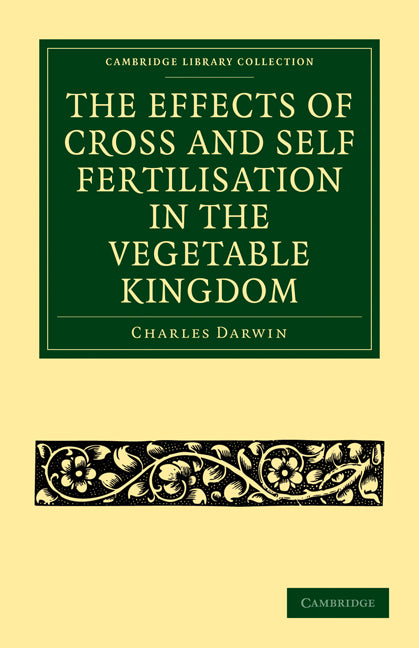Freshly Printed - allow 8 days lead
Couldn't load pickup availability
The Effects of Cross and Self Fertilisation in the Vegetable Kingdom
Darwin's detailed study of the different effects of cross- and self-fertilisation in plants.
Charles Darwin (Author)
9781108005258, Cambridge University Press
Paperback / softback, published 20 July 2009
496 pages
21.6 x 14 x 2.8 cm, 0.63 kg
Darwin's impetus for the experiments of which the results are recorded in this book was 'a mere accidental observation; and indeed it required the accident to be repeated before my attention was thoroughly aroused to the remarkable fact that seedlings of self-fertilised parentage are inferior, even in the first generation, in height and vigour to seedlings of cross-fertilised parentage'. After eleven years of meticulous experimentation and observation, described in this volume, he was ready to publish in 1876 the detailed study which he regarded as a companion volume to his 1862 On the Various Contrivances by which British and Foreign Orchids are Fertilised by Insects. His 'first and most important of the conclusions which may be drawn ... is that cross-fertilisation is generally beneficial, and self-fertilisation injurious': this understanding is of course the basis of all modern plant breeding programmes.
1. Introductory remarks
2. Convolvulacaea
2. Scrophulariaceae, Gesneriaceae, Labiatae, etc.
4. Cruciferae, Papaveraceae, Resedaceae, etc.
5. Geraniaceae, Leguminosae, Onagraceae, etc.
6. Solanaceae, Primulaceae, Polygoneae, etc.
7. Summary of the heights and weights of the crossed and self-fertilised plants
8. Difference between crossed and self-fertilised plants in constitutional vigour and in other respects
9. The effects of cross-fertilisation and self-fertilisation on the production of seeds
10. Means of fertilisation
11. The habits of insects in relation to the fertilisation of flowers
12. General results
Index.
Subject Areas: Evolution [PSAJ]


